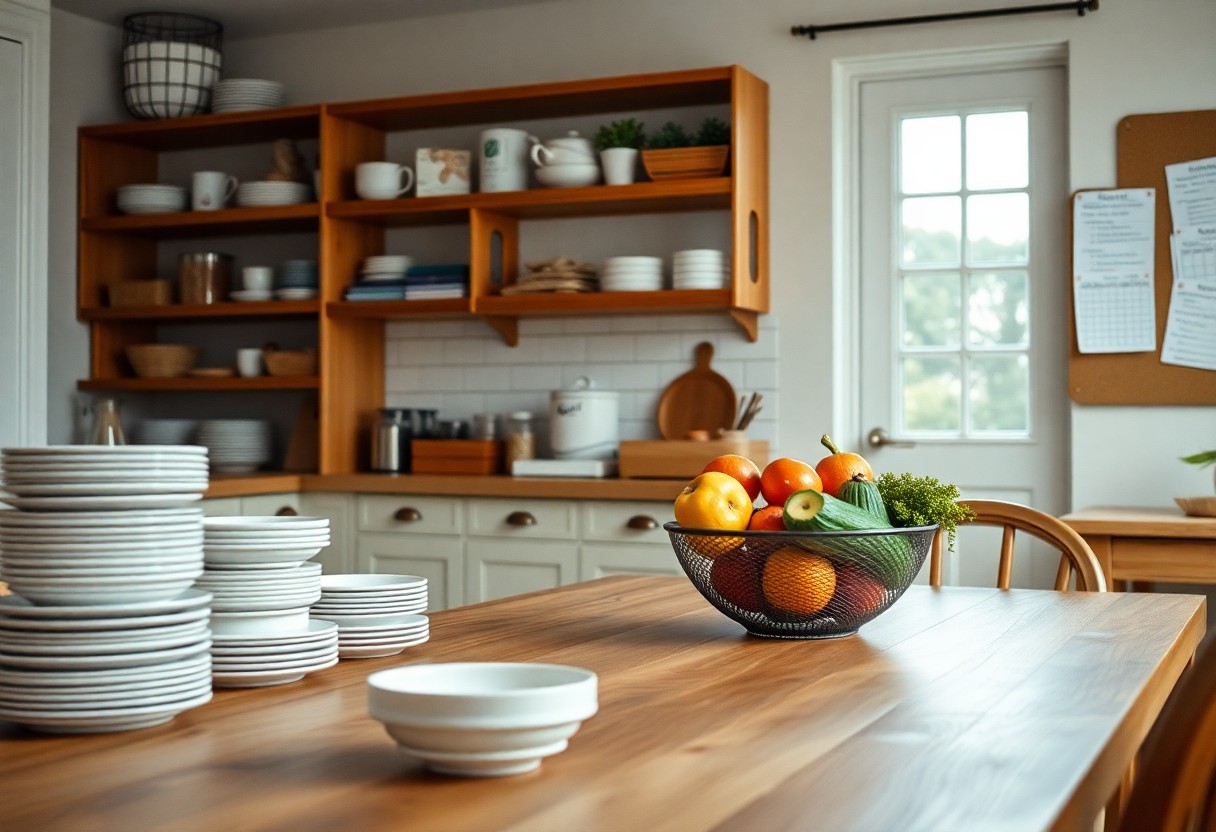You can transform your living space into a sanctuary of calm and organization by implementing strategic practices that promote order, tranquility, and lasting peace in your daily life. This comprehensive guide will provide you with practical steps and techniques to declutter, design, and maintain a serene environment, allowing you to enjoy a more peaceful and functional home that supports your well-being and productivity. From simplifying your belongings to optimizing your layout, you’ll find actionable advice to create the organized oasis you desire, empowering you to cultivate a space that nurtures relaxation, focus, and harmony for you and your loved ones in every room of your home.
Understanding the Factors for a Calm Home
A calm home environment arises from understanding several key factors that contribute to tranquility and peace. These include layout, color palette, natural light, and sound. By addressing these elements systematically, you can create a harmonious living space that promotes relaxation and focus.
Organized space enhances mental clarity. Natural light boosts mood and energy levels. Calming colors reduce anxiety. Minimal noise creates a peaceful atmosphere. This knowledge equips you to tailor your environment effectively.
Importance of Decluttering
Decluttering removes unnecessary items that can create visual and mental chaos. You can allocate time regularly to sort through belongings, keeping what truly serves you and discarding or donating what doesn’t. A clean and open space allows your mind to focus, leading to improved well-being.
A tranquil atmosphere can be achieved through thoughtful design choices and sensory elements. Soft lighting, comfortable furniture, and fragrant elements like essential oils or candles contribute to a serene environment. Using warm, dimmable lighting aids in winding down, while adding plants purifies the air and brings life to your space.
How to Organize Your Space
Organizing your space enhances functionality and promotes calm. Begin by assessing your current layout and identifying areas that require attention. Prioritize decluttering and categorizing items, creating distinct zones for different activities.
Approaching organization room by room allows for focused efforts. In the kitchen, organize your pantry by grouping similar items and labeling containers. In the living room, limit decor to meaningful pieces to reduce visual clutter. Bedrooms benefit from clear spaces by ensuring clothes are put away.
Effective Storage Solutions
Effective storage solutions maximize space and promote organization. Utilize under-bed storage for seasonal clothing and consider multifunctional furniture like ottomans with hidden compartments. Incorporate vertical storage options, like wall-mounted shelves, to free up floor space.
Consider innovative storage systems that cater to your daily habits. A pegboard in the entryway can keep bags, keys, and accessories in reach. Use clear bins to store items in closets, enabling you to see contents at a glance.
Tips for Maintaining Calmness
Consistency plays a vital role in maintaining a serene atmosphere. Establish habitual practices to keep disturbances at bay. Declutter regularly to prevent chaos. Keep personal items organized in designated spaces. Incorporate natural elements like plants to enhance your environment.
Creating a structured daily routine enhances the feeling of control. Start mornings with quiet reflection or yoga to set a positive tone. Designate specific times for chores, relaxation, and family interactions.
Incorporating Mindfulness Practices
Mindfulness helps you remain present and engaged with your surroundings. Simple practices such as deep breathing or meditation can significantly reduce stress. Focus on your senses during routine tasks to cultivate a peaceful mindset.
Engaging in guided meditation or journaling cultivates self-awareness and emotional clarity. Spend five minutes each morning setting intentions or reflecting at day’s end to reinforce calm.
Personalizing Your Environment
Infusing your home with personal touches elevates the sense of peace you experience. Curate decor that reflects your interests, values, and memories. Consider displaying family photos, travel souvenirs, or meaningful artwork.
Opt for a palette that promotes tranquility, such as soft blues, greens, or neutrals. These colors lower stress levels and create a soothing ambiance. Incorporating accent pieces in these shades can enhance feelings of serenity.
Adding Comfort Elements
Incorporate textures and materials that provide physical and emotional comfort. Plush cushions, soft blankets, and natural fibers create warmth. A cozy nook with a favorite chair, layered rugs, and ambient lighting invites relaxation.
Introduce scented candles, essential oil diffusers, or soft music to create a calming sensory experience. Houseplants enhance air quality and bring life to your space.
The Role of Natural Elements
Integrating natural elements into your home significantly enhances tranquility. Nature’s textures, colors, and scents promote relaxation and foster connection to the outdoors. Incorporating elements like wood, stone, and plants creates a calming atmosphere.
To bring nature indoors, consider houseplants, natural wood furniture, and earth-toned decor. Plants like snake plants and peace lilies purify the air and add vibrancy.
The Impact of Natural Light
Natural light plays a pivotal role in creating a serene home. It boosts mood, regulates circadian rhythms, and enhances cognitive function. Natural light exposure has been linked to improved mental health, reducing stress and anxiety. Maximize natural light through sheer curtains, reflective surfaces, and strategic furniture placement.

Tips for Family and Shared Spaces
Creating a calm and organized home requires thoughtful strategies for family and shared spaces. Effective communication and collaboration among household members significantly reduce chaos. Encourage everyone to contribute to a cleaning schedule. Designate a single spot for commonly used items.
Involve your family in establishing shared organization practices. Weekly family meetings can be productive for discussing tidying responsibilities.
Creating Zones for Harmony
Implementing zones in your home effectively manages different activities and maintains serenity. By assigning specific areas for particular functions, you minimize distractions. A reading nook promotes relaxation, while a dedicated workspace enhances productivity.
Summing up
Creating a calm and organized home involves establishing effective habits. Start by decluttering and ensuring everything has its designated place. Incorporate calming colors and natural elements. Develop a daily cleaning routine. By prioritizing organization and tranquility, you cultivate a home that supports well-being.

